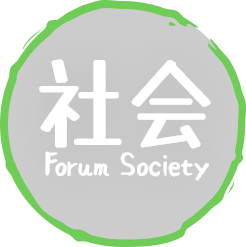[headerLesson]Introduction to Japanese Adjectives[/headerLesson]
What comes to mind when you think of an adjective? Perhaps a color,
or something that describes a noun but they can be more complex
particularly so in Japanese. Because of the lengthy nature of this
subject, it has been divided into three easy to follow lessons.
We do encourage students to read through the entire lesson before
asking for help as some information may only make sense by reading
further. However it is always up to the student and there’s no
shame in asking questions. After studying this entire lesson, you
will be able to understand sentence structures much better and be
capable of formulating both practical and complex sentences of your
own. Let’s begin.
[headerLesson]What are Adjectives?[/headerLesson] Adjectives are
words that describe a noun such as hot in “This bowl is hot”. They
can also function as verbs if they are utilized as predicates. We
will walk through this path with detailed explanations and many
examples, please do not worry.
[u]Let’s first take a look at a list of some basic
adjectives[/u]
| Adjective Kind |
Adjective Example |
| Size |
Big and Small |
| Shape |
Large and Thin |
| Age |
Old and Young |
|
| Color |
Red and Blue |
| Material |
Wooden and Brittle |
| Opinion |
Pretty and Not Pretty |
These adjectives are quite easy to understand and it should be
fairly straight forward what their relationships are to
one-another. Adjectives have two types which either end with [ i ]
or they don’t. Their purpose will be explained soon enough but
first let’s go over the adjectives in the chart above and see what
they are in Japanese.
| Adjective in English |
Adjective in Japanese |
| Big |
おおき | 大きい |
| Small |
ちいさい | 小さい |
| Large |
おおき | 大きい |
| Thin |
うすい | 薄い |
| Old |
ふるい | 古い |
| Young |
わかい | 若い |
| Red |
あかい | 赤い |
| Blue |
あおい | 青い |
| Wooden |
もくせい | 木製 |
| Brittle |
もろい | 脆い |
| Pretty |
きれい | 綺麗 |
| Not Pretty |
きれいくない | 綺麗くない |
[i]Did you notice that some of the adjectives ended with an [ i ]
while others did not? Let’s dive deeper and begin with the
i-adjective.[/i]
[headerLesson]Beginner Japanese Grammar[/headerLesson] As we’ve
already discussed, the i-adjectives in almost all cases will end
with [ i ]. You may find this very interesting but i-adjectives are
generally Japanese adjectives while な adjectives are foreign words
such as Chinese origin. This is why な adjectives typically contain
kanji while い adjectives generally use ひらがな. Unlike i-adjectives,
な-adjectives don’t have a pre-defined ending but certainly can end
with い in some cases.
Adjectives can be used to modify a noun or as a predicate. Let’s
shine light to this concept by illustrating the differences between
the two.
[tab][/tab][b]Adjective modifying a noun[/b]
[tab][/tab][tab][/tab][u]Example 1:[/u] The [hl]brown[/hl]
chair.
[tab][/tab][tab][/tab][u]Example 2:[/u] The [hl]red[/hl] car.
[tab][/tab][b]Adjective used as a predicate[/b]
[tab][/tab][tab][/tab][u]Example 1:[/u] The chair is
[hl]brown[/hl].
[tab][/tab][tab][/tab][u]Example 2:[/u] The car is
[hl]red[/hl].
While both sentences may seemingly have the same meaning, they do
not. In the first set, the adjective is modifying the chair to be
brown. In the second set, we are stating that the chair is brown.
The placement can give a different meaning to a sentence
particularly when the sentence is more complex as we are about to
see.
[tab][/tab][b]Examples of both (Expanded)[/b]
[tab][/tab][tab][/tab][u]Example 1:[/u] The [hl]brown[/hl] chair
needs to be replaced.
[tab][/tab][tab][/tab][u]Example 2:[/u] I was told the chair is
[hl]brown[/hl].
The difference of when an adjective is a true adjective and when an
adjective becomes a predicate became very evident in these two
examples.
[b][u]Elaborating on Predicates[/u][/b]
Predicates are generally used to state a reason about the given
topic. We know from the previous example that “The car is red” and
the adjective “red” was used as a predicate because it came
[b]after[/b] the noun.

The adjective “aka” is Japanese for red but earlier we’ve seen aka
written as あかい. It is an i-adjective but when an i-adjective is
used as a predicate, the last [ i ] is removed and ですis appended.
It is also possible to use other forms of です for degrees of
politeness as we will be discussing later.
[b][u]Using な as a predicate[/u][/b]
When a な-adjective is used as a predicate, the な is dropped and
just like the い- adjective, a form of ですis appended.
[tab][/tab]Let’s take a look:
[tab][/tab][tab][/tab][u]Adjective:[/u] [hl]とくべつな[/hl] =
special
[tab][/tab][tab][/tab][u]Example:[/u]
はなは[hl]とくべつ[/hl][hlr][な][/hlr]です。 ⇒ はなは[hl]とくべつ[/hl]です
[tab][/tab][tab][/tab][u]With Kanji:[/u] 花は特別です。
[tab][/tab][tab][/tab][u]Translation:[/u] Flowers are special.
After practicing a few examples, we will learn more about the
differences between different adjective types and how to use them
differently.
[headerLesson]Now it's your turn to practice![/headerLesson] In
this portion of the lesson, we will be filling in the blanks and
using adjectives as a predicate. We will use both い and な
adjectives. They will be defined for conditioning but try to locate
which ones are what type of adjectives on your own.
| Adjective (English) |
Adjective (Japanese) |
Form |
| Pretty |
かなり(い) |
い |
| Green |
みどり(い) |
い |
| Old |
ふるい |
い |
| Expensive |
こうかな | 高価な |
な |
| Famous |
ゆうめいな | 有名な |
な |
[u]Using the adjectives given above, fill in the blanks in the
sentence below.[/u]
| Topic |
Adjective |
Copula |
| (Book) ほんは |
|
|
| (Chair) いすは |
|
|
| (Person) ひとは |
|
|
| (Flower) はなは |
|
|
| (Man) おとこは |
|
|
Kindly note that we should be using kanji rather than kana as kanji
has a good way for explaining word meaning better. However, for the
time being we will utilize kana until we learn the correct
kanji.
[b]REVIEW[/b]
Before proceeding, let’s review on a few key elements.
[tab][/tab]1. い-adjectives usually end with [ i ]
[tab][/tab]2. な-adjectives don’t have a specified ending, and can
end with い at times.
[tab][/tab]3. When い-adjectives are used as a predicate (after the
topic), the last い is removed and a copula is appended but if it
comes before the topic, it does not change.
[tab][/tab]4. When な-adjectives are used as a predicate, な is
removed and a copula is appended but if it comes before the topic,
it remains the same.
[center]

[/center]
[headerLesson]Homework Assignment[/headerLesson] In today’s
homework assignment, we will be learning new katakana, improve our
existing knowledge about adjectives and practice sentence building.
Once complete, please proceed to the second part of Japanese
Adjectives to continue learning this deep exciting subject.






























 [/center]
[/center]